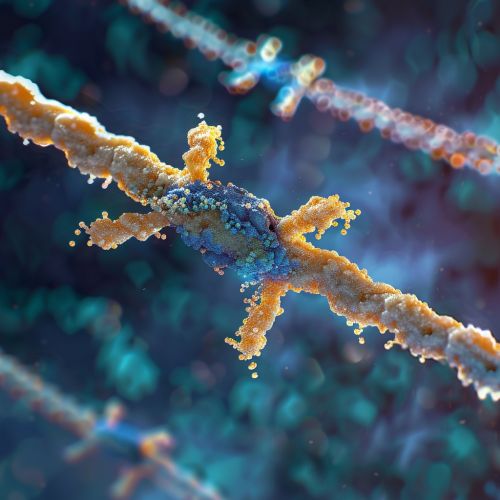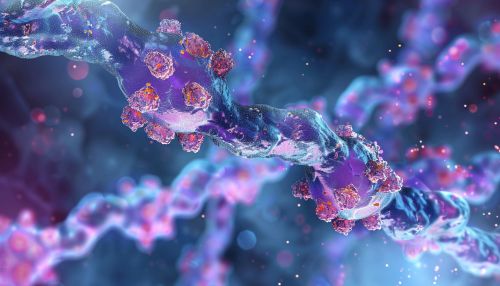Nicotinic acetylcholine receptor
Overview
The Nicotinic acetylcholine receptor (nAChR) is a type of protein that is found in the synapses of various types of cells in the nervous system. These receptors play a crucial role in the transmission of signals in the nervous system. They are named after the nicotine molecule, which is known to bind to these receptors, mimicking the action of the neurotransmitter acetylcholine.


Structure
The nAChR is a ligand-gated ion channel, which means that it opens to allow ions to pass through the cell membrane in response to the binding of a chemical messenger, or ligand. The receptor is composed of five subunits that form a central pore. Each subunit is made up of four transmembrane domains (M1-M4), with the M2 domain lining the pore. The subunits that make up the receptor can vary, and this variation can influence the receptor's function and pharmacological properties.
Function
The primary function of the nAChR is to respond to the neurotransmitter acetylcholine. When acetylcholine binds to the nAChR, it causes the receptor to change shape and open its ion channel. This allows positively charged ions, such as sodium and calcium, to flow into the cell, while potassium ions flow out of the cell. This movement of ions generates an electrical signal that can then be transmitted along the nerve cell. The nAChR is thus crucial for the transmission of signals in the nervous system.
Pharmacology
The nAChR is a target for several drugs and toxins. Nicotine, as mentioned earlier, is a well-known agonist of the nAChR - it binds to the receptor and activates it, mimicking the action of acetylcholine. Other drugs, such as the muscle relaxant tubocurarine, act as antagonists of the nAChR - they bind to the receptor but do not activate it, instead blocking the action of acetylcholine. Understanding the pharmacology of the nAChR is important for the development of drugs for a range of conditions, including neurological disorders and addiction.
Role in Disease
Abnormalities in the nAChR can lead to a number of diseases. For example, mutations in the genes encoding the nAChR subunits can cause congenital myasthenic syndrome, a disorder characterized by muscle weakness. Autoimmune diseases, such as myasthenia gravis, involve the production of antibodies that attack the nAChR, impairing signal transmission in the nervous system. The nAChR is also thought to be involved in the addictive properties of nicotine, and is a target for drugs used to treat nicotine addiction.
